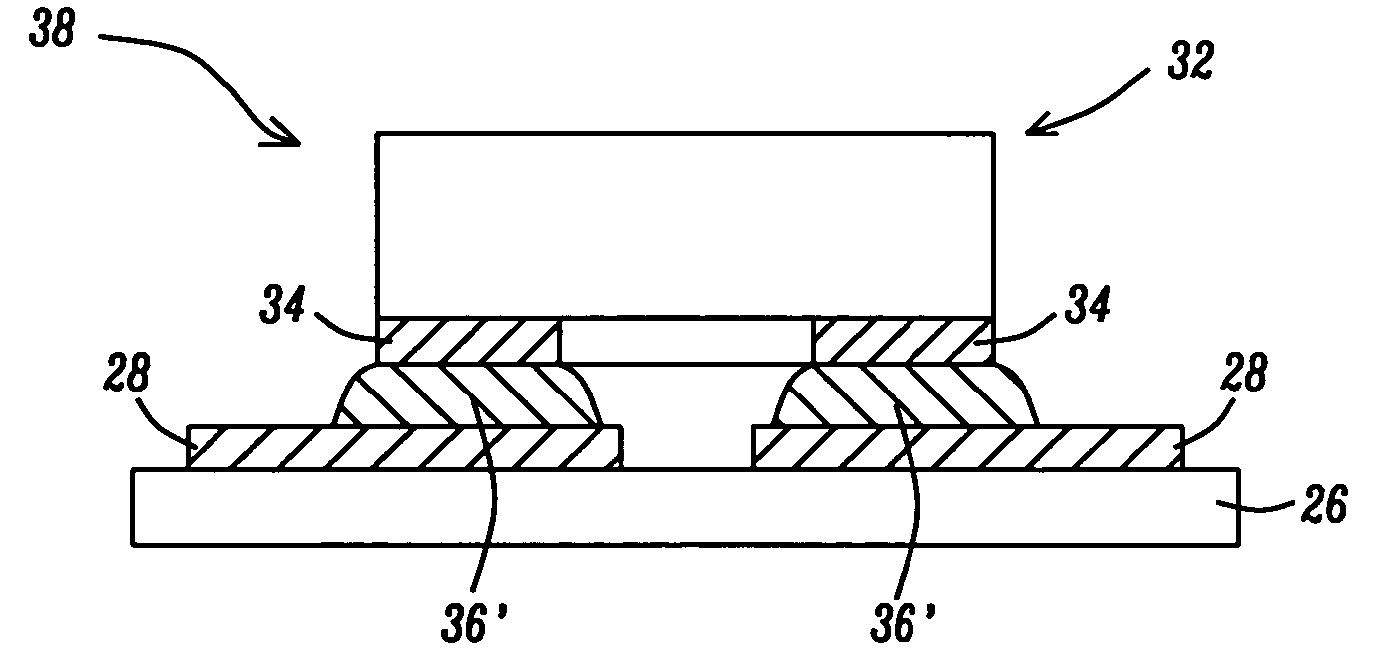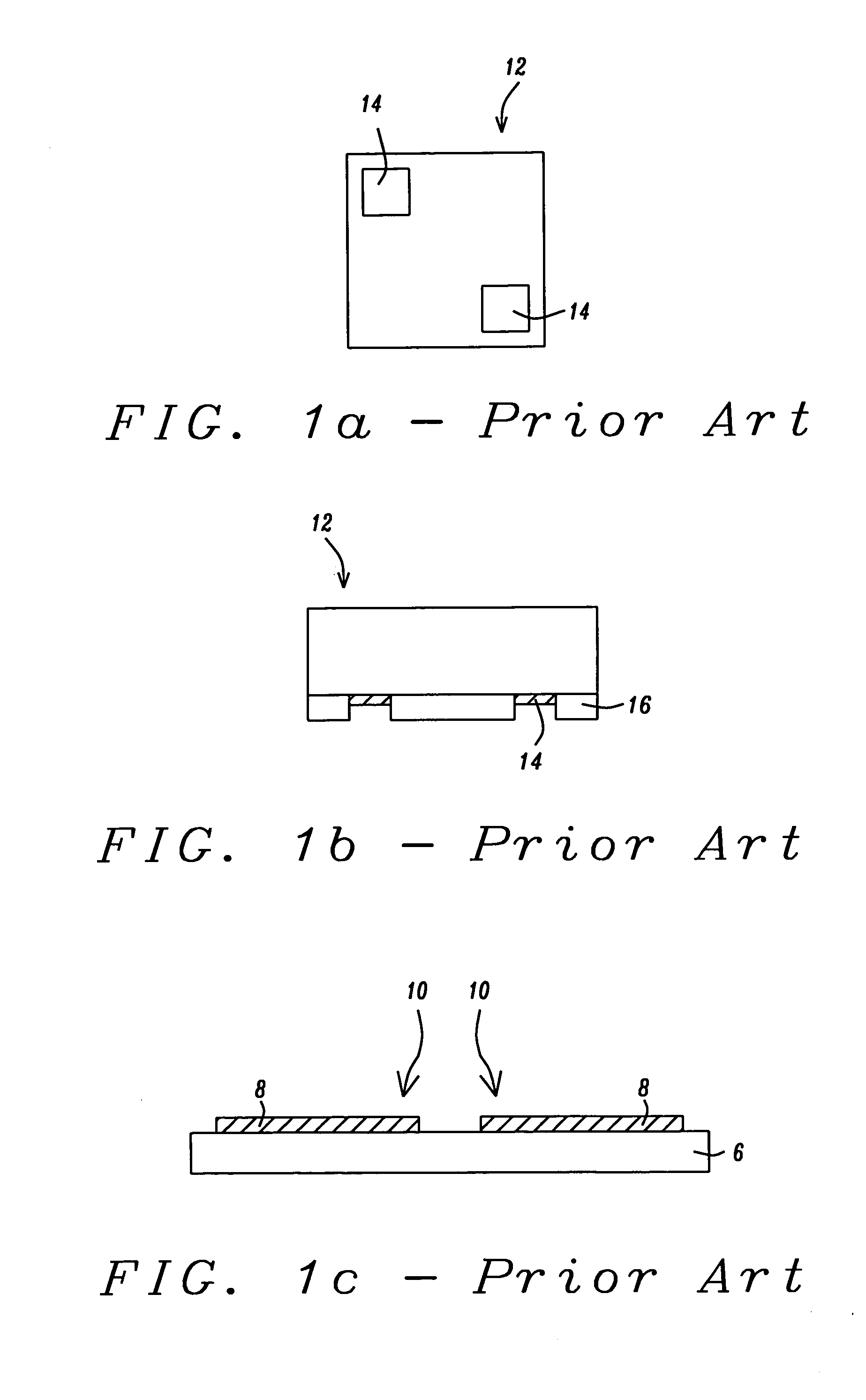Method of forming a surface mountable IC and its assembly
a technology of integrated circuits and flip-chips, which is applied in the direction of printed circuit aspects, climate sustainability, electrical equipment, etc., can solve the problems of high manufacturing cost of flip-chip assembly of rfid tags, inability to use labels on metal objects, and inability to use isotropic electrical conductivity adhesives (icas), etc., to achieve wide alignment tolerance and increase productivity
- Summary
- Abstract
- Description
- Claims
- Application Information
AI Technical Summary
Benefits of technology
Problems solved by technology
Method used
Image
Examples
Embodiment Construction
[0024] In a first embodiment of this invention a novel assembly process for mounting an RFID tag on an antenna bearing substrate is described. A key feature of the process is the use of a chip of discrete SMD terminal footprint to mount and interconnect the chip to the substrate, using an isotropic electrically conductive adhesive.
[0025] Referring now to FIGS. 3a, 3b and 3c, a RFID tag integrated circuit chip 32 having a standard discrete SMD terminal footprint is shown. RFID chip 32 is to be mounted and interconnected to an rf antenna 28 which has been patterned on substrate 26. The RF antenna is formed by patterning and curing a conductive paste on the substrate 26. Alternately the RF antenna 28 may be formed by patterning a metal sheet which has been bonded onto the carrier substrate 26. Rf Antenna 28 may be either of coil, dipole, or other two terminal configuration having terminals 30 at locations which, in accordance with standard discrete SMD guidelines are patterned to matc...
PUM
 Login to View More
Login to View More Abstract
Description
Claims
Application Information
 Login to View More
Login to View More - R&D
- Intellectual Property
- Life Sciences
- Materials
- Tech Scout
- Unparalleled Data Quality
- Higher Quality Content
- 60% Fewer Hallucinations
Browse by: Latest US Patents, China's latest patents, Technical Efficacy Thesaurus, Application Domain, Technology Topic, Popular Technical Reports.
© 2025 PatSnap. All rights reserved.Legal|Privacy policy|Modern Slavery Act Transparency Statement|Sitemap|About US| Contact US: help@patsnap.com



